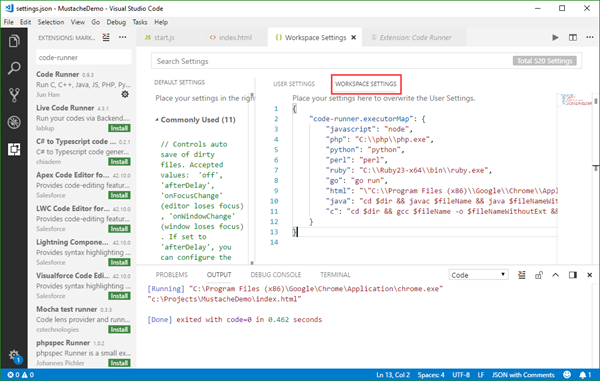Perl - Hashes - A hash is a set of key/value pairs. Hash variables are preceded by a percent (%) sign. To refer to a single element of a hash, you will use the hash variable na. Download Perl 5.28 and 5.26 from ActiveState & get precompiled Perl distribution. ActivePerl's Community Edition is free for development use. Paiza.IO engine is the lightest container based code runner engine that support all (20+) popular compiler or script languages. Paiza.IO engine provides stable running time, extremely low latency without any polling, and scalable infrastructure. Whenever you come up with new idea, learn or teach programming, you and others can just write and run code. Paiza.IO engine paiza.IO engine is the lightest container based code runner engine that support all(20+) popular compiler or script languages. Paiza.IO engine provides stable running time, extremely low latency without any polling,.
Earlier we discussed the basics of how to write and execute a perl program using Perl Hello World Example.
In this article, Let us review how to debug a perl program / script using Perl debugger, which is similar to the gdb tool for debugging C code.
To debug a perl program, invoke the perl debugger using “perl -d” as shown below.
To understand the perl debugger commands in detail, let us create the following sample perl program (perl_debugger.pl).
1. Enter Perl Debugger
# perl -d ./perl_debugger.pl
it prompts,
DB<1>
2. View specific lines or subroutine statements using (l)
DB<1> l 10
10: my $pattern;
DB<2> l get_pattern
11 {
12: my $pattern;
13: print “Enter search string: “;
14: chomp ($pattern = );
15: return $pattern;
16 }
3. Set the breakpoint on get_pattern function using (b)
DB<3> b find_files
4. Set the breakpoint on specific line using (b)
DB<4> b 44
5. View the breakpoints using (L)
Php Runner 9.6
DB<5> L
./perl_debugger.pl:
22: my $pattern = shift;
break if (1)
44: print join “n”,@list;
break if (1)
Code Runner Perl
6. step by step execution using (s and n)
DB<5> s
main::(./perl_debugger.pl:39): $pattern = get_pattern();
DB<5> s
main::get_pattern(./perl_debugger.pl:12):
12: my $pattern;
Option s and n does step by step execution of each statements. Option s steps into the subroutine. Option n executes the subroutine in a single step (stepping over it).

The s option does stepping into the subroutine but while n option which would execute the subroutine(stepping over it).
7. Continue till next breakpoint (or line number, or subroutine) using (c)
DB<5> c
Enter search string: perl
main::find_files(./perl_debugger.pl:22):
22: my $pattern = shift;
8. Continue down to the specific line number using (c)
DB<5> c 36
main::find_files(./perl_debugger.pl:36):
36: return @list;
9. Print the value in the specific variable using (p)
DB<6> p $pattern
perl
DB<7> c
main::(./perl_debugger.pl:44): print join “n”,@list;
DB<7> c
./perl_debugger.pl
Debugged program terminated. Use q to quit or R to restart,
use o inhibit_exit to avoid stopping after program termination,
h q, h R or h o to get additional info.
After the last continue operation, the output gets printed on the stdout as “./perl_debugger.pl” since it matches the pattern “perl”.
10. Get debug commands from the file (source)
Perl debugger can get the debug command from the file and execute it. For example, create the file called “debug_cmds” with the perl debug commands as,
c
p $pattern
q
Note that R is used to restart the operation(no need quit and start debugger again).
DB<7> R
DB<7> source debug_cmds
>> c
Enter search string: perl
./perl_debugger.pl
Debugged program terminated. Use q to quit or R to restart,
use o inhibit_exit to avoid stopping after program termination,
h q, h R or h o to get additional info.
>> p $pattern
perl
>> q
Note: If you are relatively new to perl, refer to our previous article: 20 perl programming tips for beginners.
How To Run Perl File
Summary of perl debugger commands

Following options can be used once you enter the perl debugger.
Phprunner
- h or h h – for help page
- c – to continue down from current execution till the breakpoint otherwise till the subroutine name or line number,
- p – to show the values of variables,
- b – to place the breakpoints,
- L – to see the breakpoints set,
- d – to delete the breakpoints,
- s – to step into the next line execution.
- n – to step over the next line execution, so if next line is subroutine call, it would execute subroutine but not descend into it for inspection.
- source file – to take the debug commands from the file.
- l subname – to see the execution statements available in a subroutine.
- q – to quit from the debugger mode.
